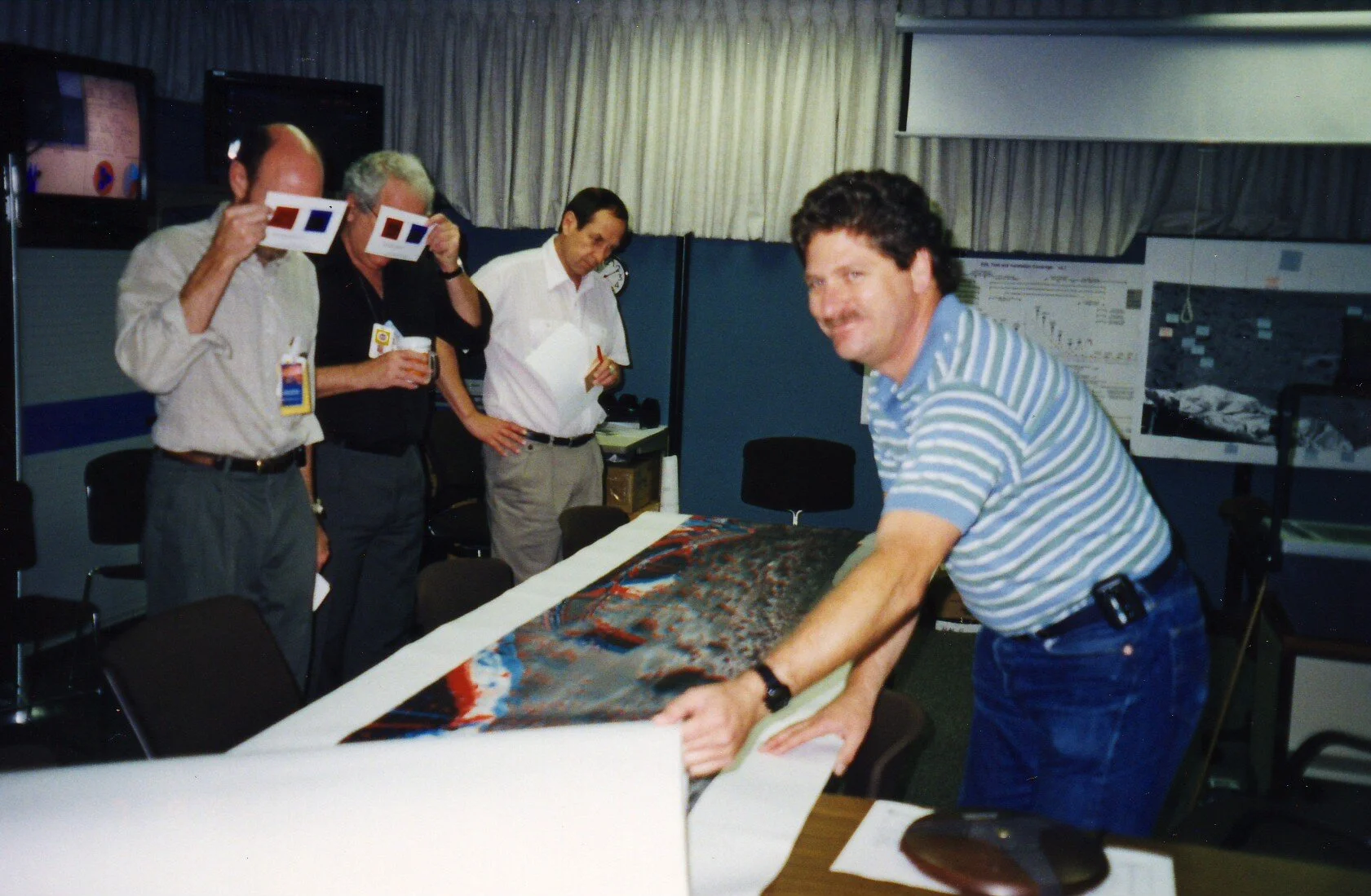Table of Contents—My Life in Space
Prelude
From science fiction, through college, and designing nuclear reactors in the Aerospace industry
Chapter 2—Mariner Mars 1971—The Golden Age begins
Arriving at JPL and getting involved in removing distortion from images taken by vidicon cameras flying the first spacecraft to orbit another planet, the Mariner 10 mission to Mars
Chapter 3—Mapping Mars
Creating the first accurate maps ever made of another planet from thousands of images, highlighting the extinct giant volcanoes on Mars and the extraordinary canyon stretching over 2000 miles across the Martian surface
Chapter 4—Venus and Mercury—Two for the Price of One
Mariner 10 provides ultraviolet images of the clouds of Venus as it flies past Venus and then orbits and maps the surface of Mercury
Chapter 5—The Vikings are Coming
JPL prepares to support two orbiters and two landers flying to Mars, planning to arrive at the red planet during the Bicentennial celebration of the United States. My team gets the job of producing the historic photographic record of the first and second spacecraft to land on the surface of Mars
Chapter 6—Touchdown!
We produce the first 3D images from the surface of another planet, and the first color images from the Martian surface, while processing thousands of images taken by the two Viking Orbiter spacecraft circling the planet.
Chapter 7—I miss the Tour
After working on preparations for processing the data for images to be returned by the 2 Voyager spacecraft that fly past the outer planets—Jupiter, Saturn, Neptune—I leave JPL for private industry after the first Jupiter images are processed
Chapter 8—You Can Go Home Again
After a decade spent in private industry, , I am blessed to get an opportunity to return and eventually manage the image processing team at JPL again, in time for processing the scence data returned by the extraordinary Galileo mission that monitored Jupiter and its moons while in orbit around the giant planet
Chapter 9—Battlestar Gallactica
NASA begins a campaign to lower the cost of planetary exploration, forcing redesign of the Cassini mission and elimination of one of the two spacecraft envisioned for that mission, and pressuring JPL to fly new and innovative smaller spacecraft that can be flown for lower costs. We adapt to changing times.
Chapter 10—The Fountain of Youth—Mars Pathfinder
Responding to pressure for lower cost missions, JPL develops an innovative design for a small lander to return to Mars, carrying an experimental Rover to test concepts for future rovers that can roam the Martian surface. 20 years after the successful Viking Lander mission I get to lead the team that produces the imaging data from the Pathfinder Lander and the Sojourner Rover, and to experience again the thrill of operating vehicles on the surface of Mars and sending the images out to the scientists and the public.
Chapter 11—More than the Eyes can See
I am asked to transfer to Caltech to manage the Infrared Processing and Analysis Center and to lead development of the data system that will manage mission planning and science data processing for the new Spitzer infrared telescope that will eventually spend sixteen years in space observing objects that cannot be seen in visible light from earth. Spitzer was named for Lyman Spitzer, who advocated flying astronomical telescopes in space that vastly exceed the observing capability of ground based telescopes by avoiding the effects of the atmosphere on astronomical imagery and expand the observations into regions of the spectrum producing images “more than the eye can see” from earth..
Epilogue
Some thoughts about Carl Sagan’s inspirational vision in the 1960’s of the potential for space exploration, as I transitioned into retirement, and into the world of continued participation as a consultant to JPL and NASA

Sunset on Mars, as imaged from Viking Lander in 1976

Images of the 4 "Galilean Moons" circling Jupiter, taken by the Voyager mission in the 1970's as it flew by the planet.. Galileo Galilei first viewed these moons of Jupiter as dots in the sky through his telescope, in 1610, Images Clockwise from upper left: Io, Callisto, Europa, Ganymede

The Great Red Spot of Jupiter, image taken during the Galileo mission

Kris Capraro shows members of the Caltech Board of Trustees Mars in 3D from Mars Pathfinder mission images, using their red/blue glasses to view an anaglyph produced by our software